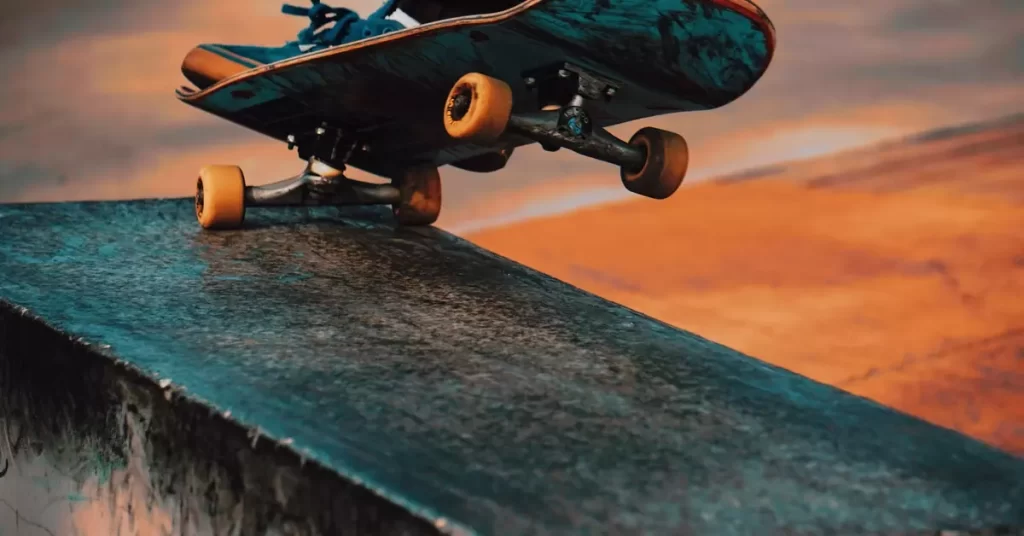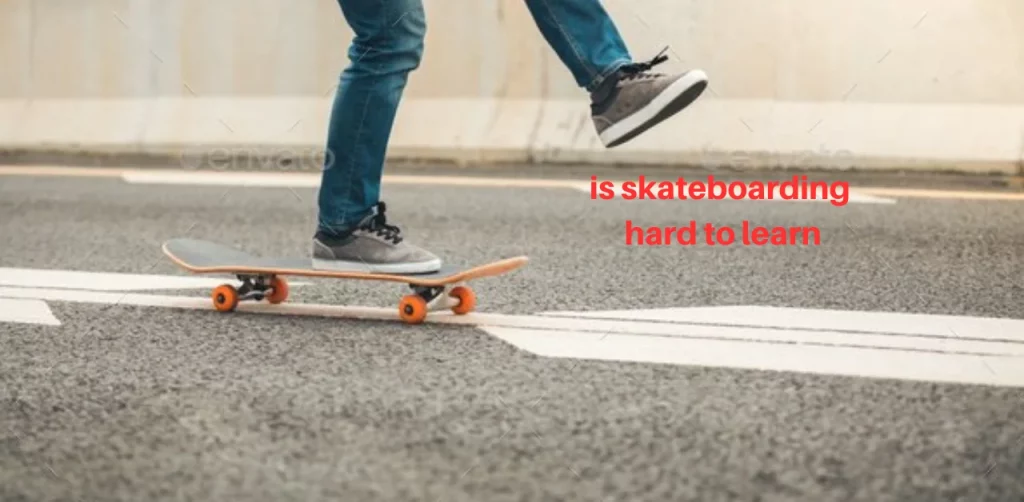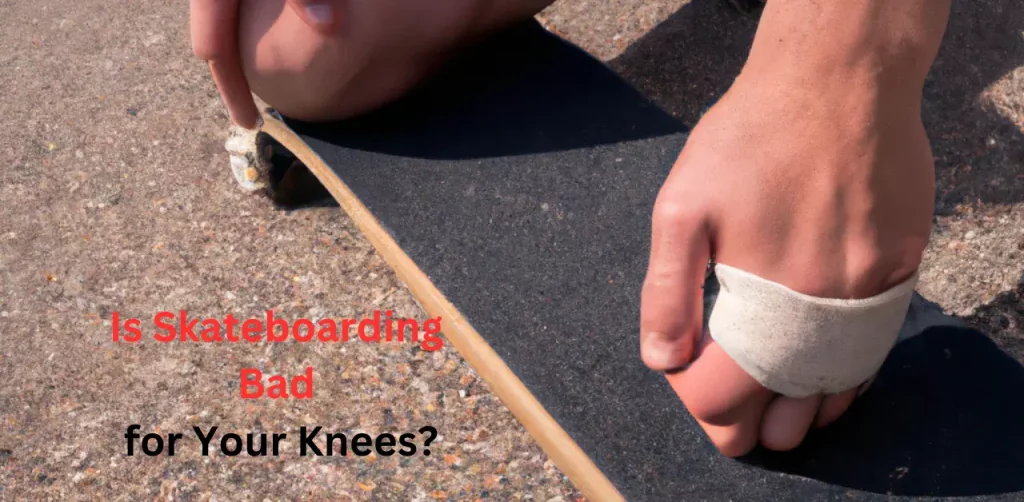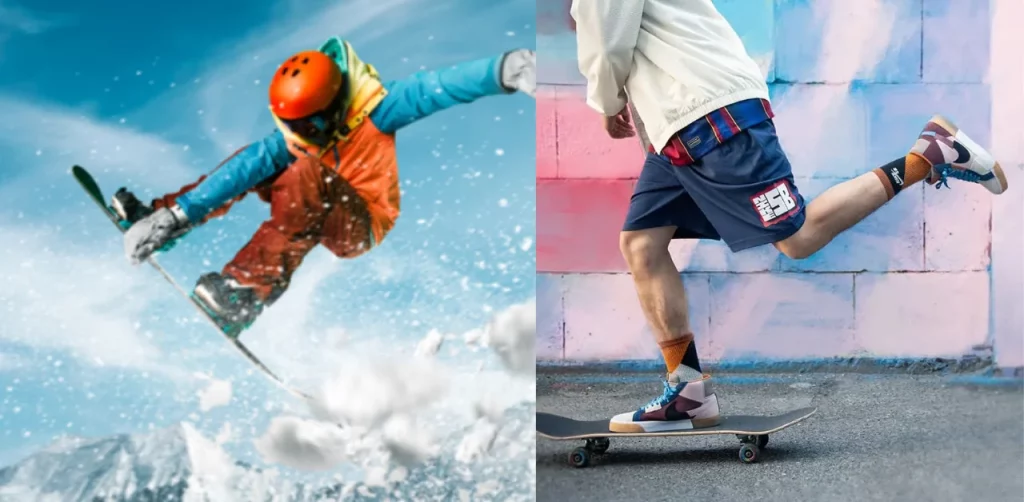When it comes to learning how to balance on a skateboard, proper stance is key. Many beginners make the mistake of having their feet too close together or too far apart, which can throw off their balance. Instead, focus on finding the ideal position where your feet are shoulder-width apart, parallel to each other, and centered on the board. This will help you maintain stability while riding and executing tricks.
Another important aspect of balancing on a skateboard is understanding your center of gravity. Your center of gravity is essentially the point at which your weight is evenly distributed. To find this point, stand with your feet shoulder-width apart and gently shift your weight from side to side until you feel balanced. Once you’ve discovered where your center of gravity lies, try to maintain that balance when standing on the board. This will allow you to have better control and adjust your body movements accordingly.
How to Balance on a Skateboard? Step by Step Guide
Starting with the Right Equipment
Before you begin learning to ride a skateboard, it’s essential to start with the right type of skateboard. Opt for a quality skateboard, one from a skateboard shop rather than a generic department store board. Choose a skateboard that can be used comfortably according to your level. In addition, invest in a pair of good skate shoes that provide both grip and comfort. Check the wheels on your skateboard as well; they play a significant role in maintaining balance.
Position Your Feet Correctly
When first learning how to skateboard, knowing where to stand on the skateboard is crucial. Make sure your feet are almost perpendicular to the length of the board. Place your front foot across the middle of the board and your back foot near the tail of the board. Proper foot positioning makes it easier to balance on the board.
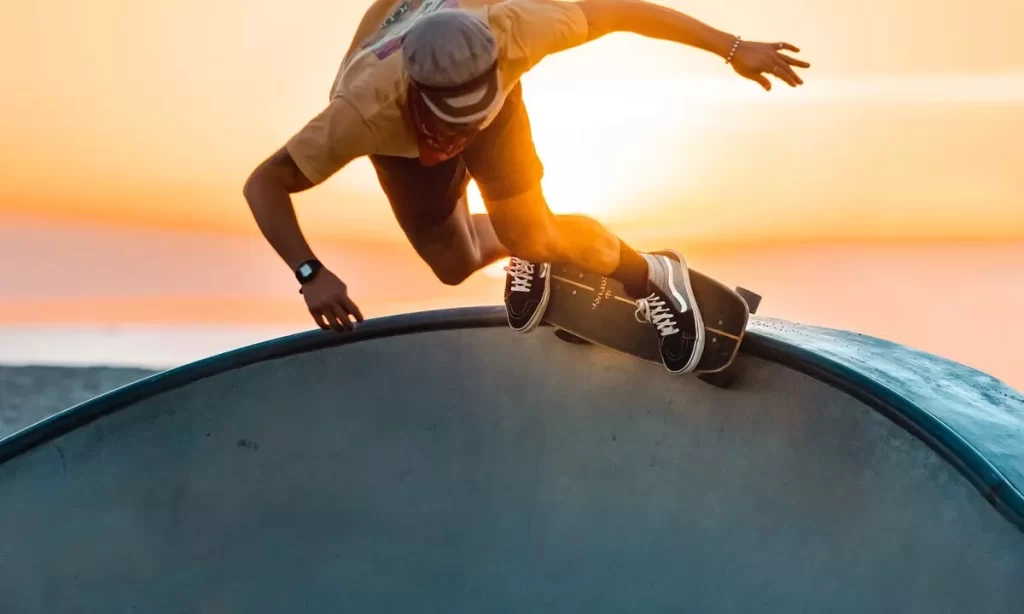
Center of Gravity: The Heart of Balance
To keep your balance on a skateboard, maintaining a low center of gravity is key. Bend your knees slightly and keep your weight centered over the board. It’s also a good idea to keep your knees flexible and not locked. This helps you to balance your body more efficiently and maintain a good balance while riding.
Practice Balancing on Stable Ground
For beginners, it’s advisable to practice balance by placing your skateboard on carpet or grass. This prevents the skateboard from rolling around, allowing you to work on your balance in a controlled environment before you take to the streets.
Shifting Your Weight: Making the Moves
To turn the board, you need to shift your weight to either side of your skateboard. If you want to turn in a certain direction, simply shift your weight onto the corresponding side’s edge. Balance by shifting your weight plays a critical role in how you control the board.
Maintaining Control on a Moving Skateboard
Balancing on a moving skateboard takes conscious effort and practice. Always keep your weight balanced over the center of the board and your eyes focused ahead, not down at your feet. When you are learning to ride a skateboard, it’s common to lose your balance, but with time, maintaining balance on a moving skateboard will become second nature.
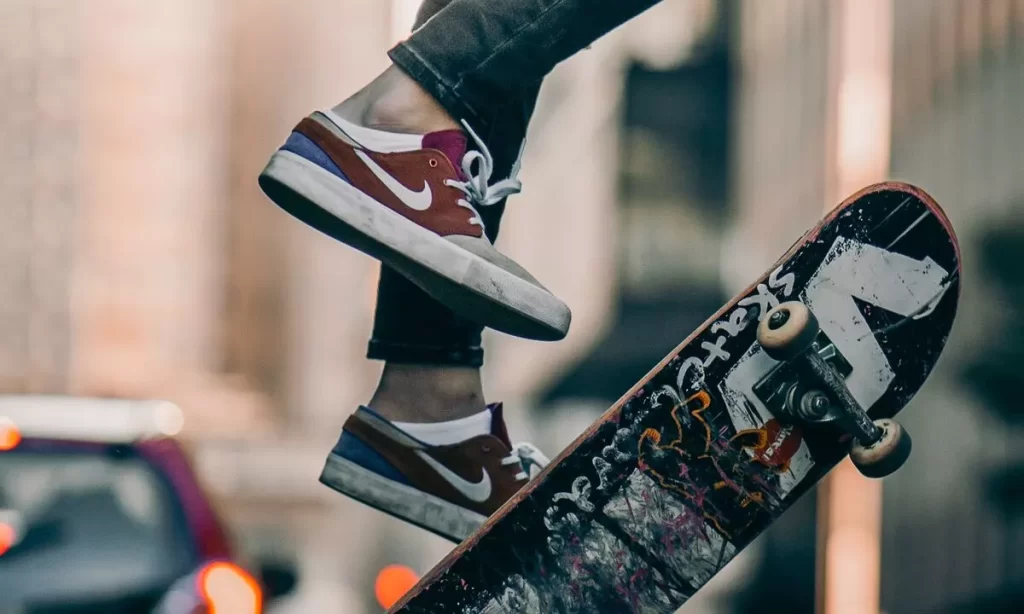
Foot Placement and Control
Ensuring your feet are in constant contact with the board is crucial. Whether you are using your pushing leg or have one foot on the board, this contact is essential. Your front foot controls the turning while applying pressure with your back foot on the tail of the board can help you come to a stop.
Safety Measures: The Wheels and Stopping
While riding, regularly check the wheels on your skateboard to ensure they are securely attached and in good condition. If you need to come to a stop, gently use your back foot to apply pressure on the ground, slowly reducing your speed until you come to a complete stop without losing your balance.
How to Push off on a Skateboard after Balancing
Pushing off on a skateboard after finding your balance is a fundamental skill that every skateboarder needs to master. It involves propelling yourself forward while maintaining your balance on the board. Here’s a step-by-step guide to help you learn how to push off effectively:
Get Comfortable on the Board
Before you push off, make sure you’re comfortable standing on the skateboard. Your front foot (left foot for regular stance, right foot for goofy stance) should be across the board, angled slightly forward near the front bolts of your skateboard.
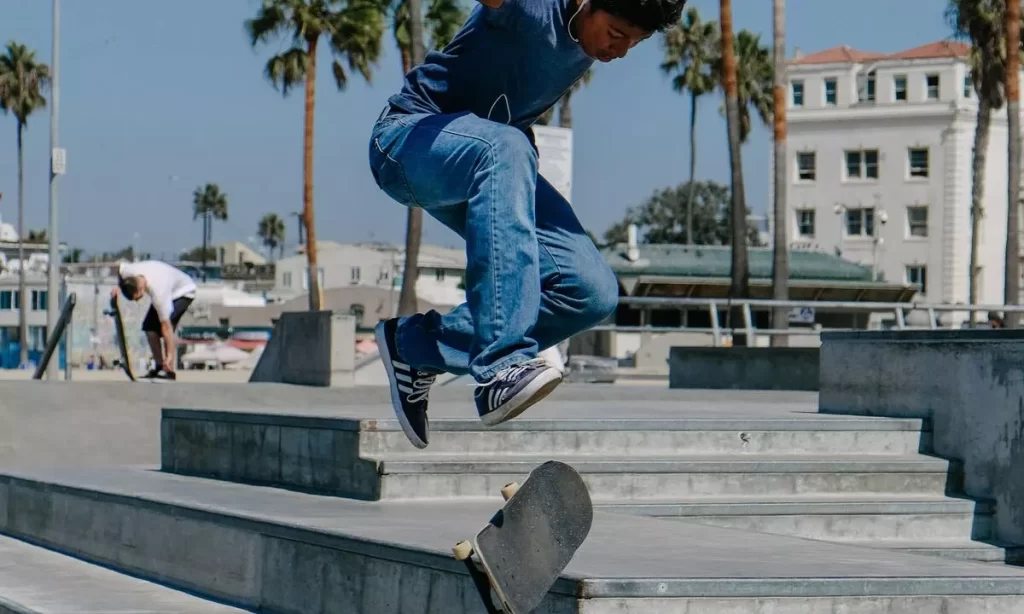
Find Your Balance
Shift your weight onto your front foot while keeping your knees slightly bent. This will be your balancing foot while you push. It’s important to feel solid and stable on this foot.
Position Your Pushing Foot
Take your back foot (the one not on the skateboard) and place it beside the skateboard, flat on the ground. This is your pushing foot.
Begin to Push
Gently press down with your pushing foot and allow it to move backward along the ground. Imagine you are trying to scrape something off the bottom of your shoe. This motion will propel your skateboard forward.
Transfer Your Weight
As you push, begin to transfer some of your weight from your front foot to your pushing foot, but keep enough weight on your front foot to maintain control of the board.
Return Your Pushing Foot
After you have completed a push, smoothly bring your pushing foot back onto the skateboard. Place it near the rear bolts or on the tail, depending on your preference and what feels comfortable. Your feet should now be in a similar position to when you started, but your skateboard will be moving.
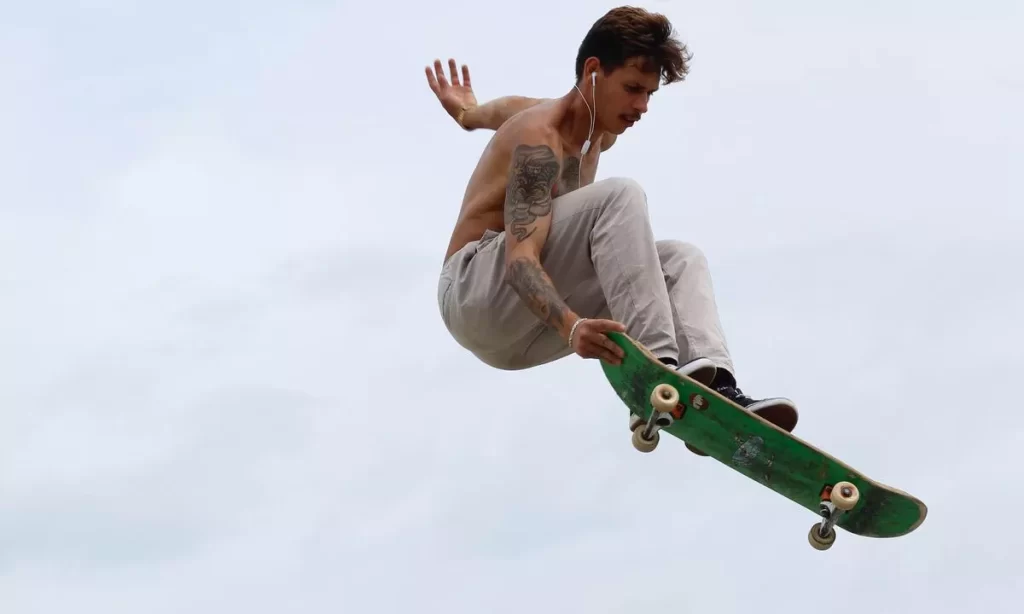
Adjust Your Stance
Once your pushing foot is back on the board, adjust your stance to be more parallel with the skateboard, which will help you to better balance while you’re moving.
Repeat as Necessary
To continue gaining speed, repeat the pushing process. Be sure to push smoothly and rhythmically, not too hard or abruptly.
Practice
Like anything with skateboarding, practice is key. Start with small pushes and work your way up to more powerful and prolonged pushes as you become more comfortable.
Safety First
Always wear appropriate safety gear, including a helmet and pads, especially when you are learning. Start on a flat and smooth surface, free from traffic and obstacles.
Tips
- Keep Your Shoulders Aligned: Keeping your shoulders aligned with the skateboard can help maintain your balance while pushing.
- Look Forward, Not Down: Keep your eyes focused on where you want to go, not at your feet. This helps with balance and steering.
- Bend Your Knees: Keeping a slight bend in your knees makes it easier to absorb any bumps and helps you to maintain balance.
Learning to push off effectively while maintaining your balance is a crucial skill for any skateboarder, and it’s something that will become second nature with consistent practice. Always start slowly and in a safe environment, and make sure you are comfortable and confident with each step before moving to the next.
How Long does it take to learn to Balance on a Skateboard?
The time it takes to learn how to balance on a skateboard can vary widely from person to person. It depends on several factors including your previous experience with similar activities (like surfing, snowboarding, or other balance-related sports), your general level of fitness and coordination, the amount of time you can dedicate to practice, and your level of comfort and fearlessness on the board. Here is a general idea based on different scenarios:
Complete Beginners
For someone who has never participated in any board sports, it might take a few days to a couple of weeks of regular practice to get comfortable balancing on a stationary board and then a moving board.
Some Experience with Similar Activities
For individuals who have some experience with similar activities, like surfing or snowboarding, the learning curve might be shorter. These individuals often find that they can start to feel comfortable balancing on a skateboard within a few days.
Young, Fearless Kids
Young children often have less fear and a lower center of gravity, which can make learning to balance on a skateboard easier and faster. It is not uncommon for kids to get the hang of it in a matter of days.
Adults or Individuals Who Are More Cautious
For adults or individuals who are more cautious, it might take a bit longer, perhaps several weeks of consistent practice, to feel comfortable and balanced on a skateboard.
Practice Time
More practice will likely speed up the process. For someone practicing an hour a day, progress will likely be quicker than for someone practicing an hour a week.
Personal Fitness Level
People with a higher level of fitness, particularly core strength, may find it easier to learn to balance, as much of skateboarding relies on core stability.
Mental Factor
Confidence and the ability to relax while on the board play a significant role. People who are tense are more likely to struggle with balance.
Here are some tips to help speed up the process:
- Make skateboarding a part of your daily routine, even if it’s just 20-30 minutes a day.
- Begin by just standing on the skateboard while it’s on a carpet or grass (which keeps the board from rolling). Get comfortable with this before moving to a harder surface where the board can roll.
- Wearing appropriate safety gear (helmet, knee pads, elbow pads, and wrist guards) can give you the confidence to practice without the fear of getting seriously injured.
- Consider taking a lesson from a professional skateboard instructor. They can provide valuable tips and correct your form from the start.
- Work on your balance with exercises like standing on one foot, using a balance board, or practicing yoga.
- It’s important not to tense up too much when you are learning. Plus, everyone progresses at their own pace, so be patient with yourself.
Remember, skateboarding, like any physical skill, is something that gets easier the more you do it. The key is consistent, focused practice, and a patient, positive attitude.
Final Words: It Takes Practice
To ride a skateboard with skill, you need to practice balance consistently. Balance and control are intertwined, and both are built over time with consistent practice. Don’t get discouraged if it’s hard to balance at first; the more you practice, the more you will improve your ability to balance your skateboard.
In closing, remember that everyone was a beginner at some point. Skateboarding is a fun and effective way to get around, but it requires respect for the learning process. Always ensure that your skateboard wheels are securely attached, and your equipment is in good shape to keep it from moving around unexpectedly. Keep practicing, stay safe, and soon you will find that it becomes second nature to maintain your balance on a skateboard.
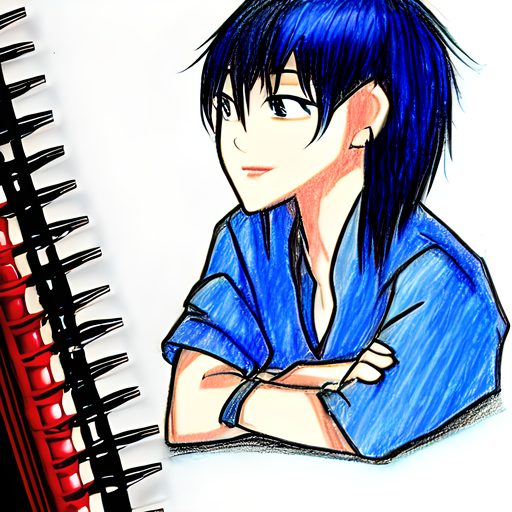
“Welcome to our website, Here You’ll find a wealth of information on finding the right skating gear that will last for years to come, as well as tips and tricks to help you improve your skills. Whether you’re a beginner or an experienced skater, you’ll find something of value here.”
